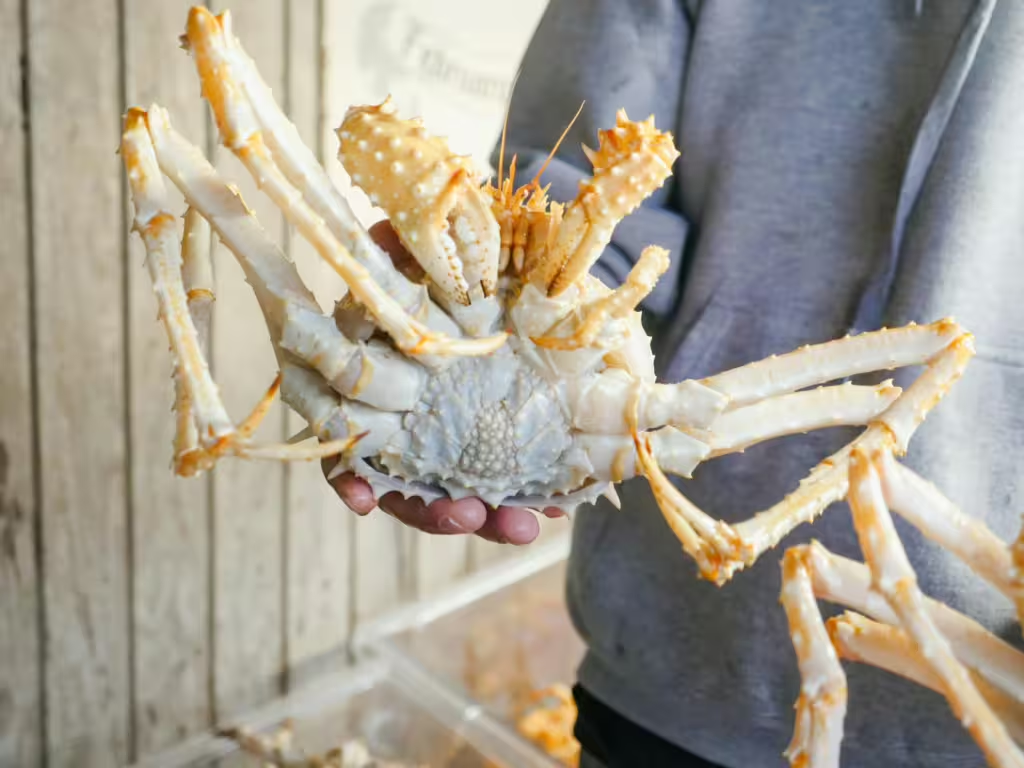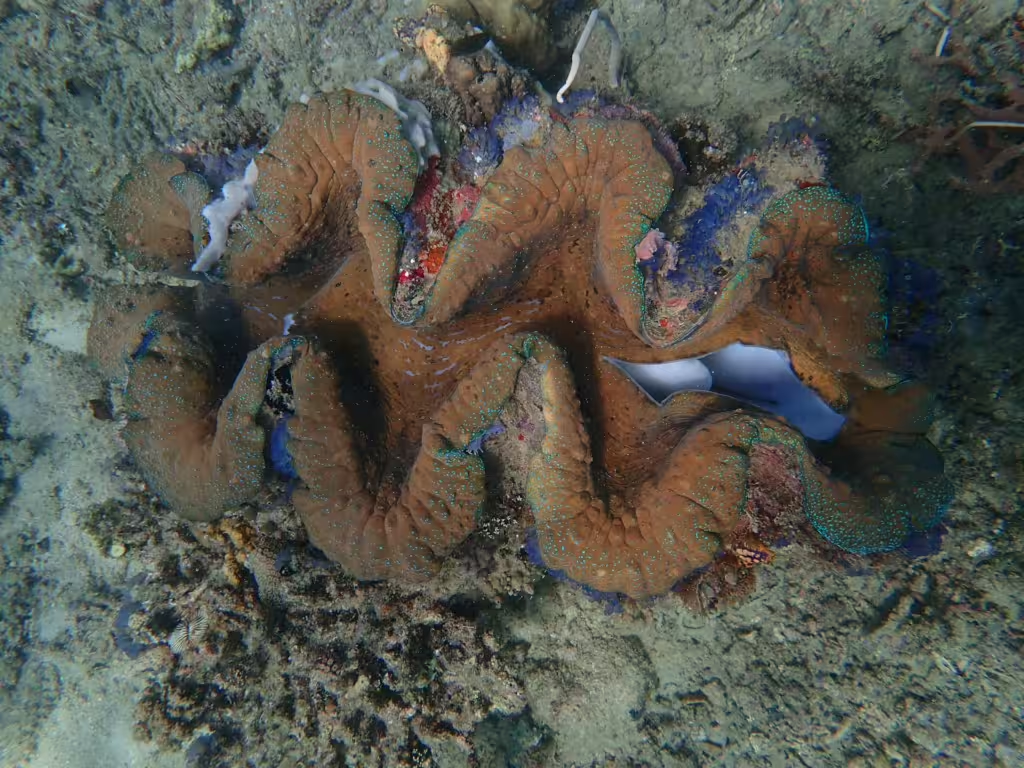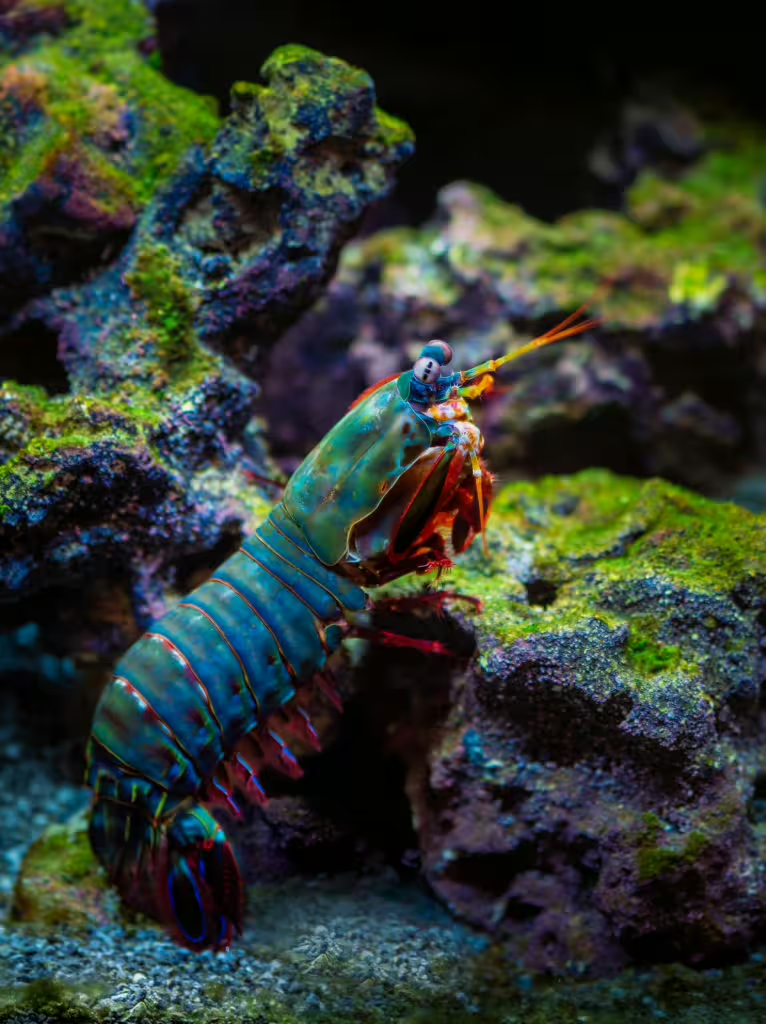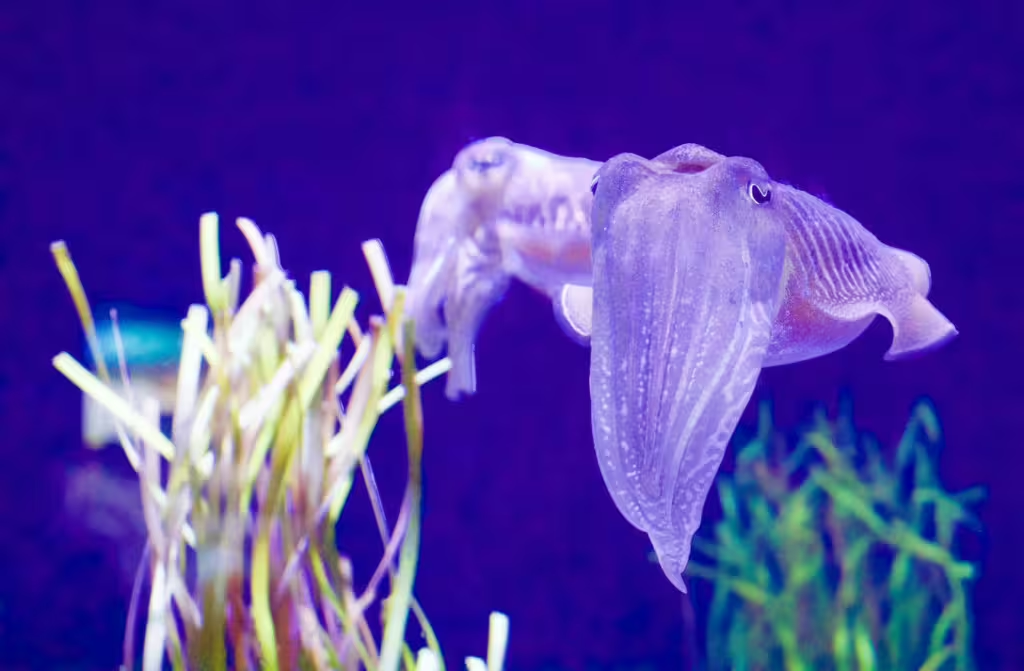When we think about the ocean and the many, fascinating marine species that dwell there, we tend to focus first on charismatic megafauna like whales and sharks. These impressive aquatic mammals and voracious, giant fish often dominate discussions about marine life, and it’s easy to see why. Yet, if we take a moment to look beyond the most recognizable faces in the sea, we may find that it is the unseen weirdos, those that dwell in inhospitable biomes or hide on the ocean floor, that display the most remarkable features of all.
Indeed, many of the ocean’s most fascinating and ecologically important creatures are much smaller and far less well-known than the aquarium favorites we have all grown accustomed to. Among these are rare breeds of crustaceans and mollusks—invertebrates possessed of amazing adaptations and behaviors unseen in other, higher lifeforms. And while sharks remain the ocean’s apex predators in a number of different marine habitats, the ecological roles of these unsung heroes of the keep are just as vital for keeping their marine and freshwater homes in balance.
Since most of our interaction with crustaceans and mollusks tends to be centered around their culinary applications, its easy to overlook what incredibly diverse groups these two types of animals are. They aren’t just snow crab legs and steamed mussels, they are tiny amphipods and burrowing clams, vividly colored nudibranchs, giant oysters, and elusive deep-sea crawlers.
Despite their relatively small size, these animals are ecological powerhouses within their respective domains. They filter water, recycle nutrients, maintain sediment structure, and serve as critical links in food webs. Some, if not all the species we aim to highlight in the list below, exhibit highly specialized lifestyles—living in extreme environments like hydrothermal vents or forming symbiotic relationships with other marine organisms. More than a few of these species are what scientists call bioindicators, animals whose presence or absence can reveal much about the health of their aquatic ecosystems.
Sadly, many of these species face growing threats from habitat loss, pollution, climate change, and overharvesting. Unlike Blue Whales and Hammerhead sharks, the small size and unusual habits of these hidden gems often mean they go unnoticed in conservation conversations, which only makes them even more vulnerable to outside threats by humans.
In this article, we will venture deep to shine a spotlight on a handful of rare or little-known species of crustaceans and mollusks. In each entry, we will showcasing some of their natural history, survival strategies, and the critical niches they fill in their home ecosystems. So, without further ado, let’s dive right in!

Yeti Crab (Kiwa hirsuta)
Habitat: These delightfully hirsute little buggers live on the edge of deep-sea, hydrothermal vents of the South Pacific Ocean.
Adaptations: The crabs possess hairy pincers for farming bacteria as well as impressive tolerance to extreme heat.
Ecological Role: In their highly-specialized zone, the yeti crab acts as a primary consumer at these hydrothermal vent ecosystems.
A fairly new addition to the global pantheon of fauna, this crab was only just discovered in 2005. The Yeti crab lives near hydrothermal vents, where it uses its hairy claws to cultivate and harvest bacteria. These bacteria are not only its primary food source, they also enable the crab to help sustain the unique, chemosynthetic communities found only at these extreme ocean depths.
Scaly-foot Gastropod (Chrysomallon squamiferum)
Habitat: This Pokemon-like animal can be found in the Indian Ocean, also near dangerous hydrothermal vents.
Adaptations: The Scaly-foot Gastropod has iron sulfide scales for protection and lives off symbiotic bacteria.
Ecological Role: Within this strange undersea world, this little snail has found ways to converts hydrothermal chemicals into energy, making a key part of the vent food chain.
This bizarre, shielded mollusk builds its own suit of iron armor from minerals found in its environment. Meanwhile, its specialized gills host bacteria that convert hydrogen sulfide from the vents into usable energy, making the snail a primary producer in its highly-specialized ecosystem.
Giant Isopod (Bathynomus giganteus)
Habitat: Looking more like a giant pillbug than anything else, this primeval arthropod lives in the deep sea of the Atlantic and Pacific Oceans.
Adaptations: Size is the key with this ocean bug, as its gigantism is a special adaptation to grant it better energy efficiency. It can also partake in long-term fasting for the same energy-conservation reasons.
Ecological Role: Like most ocean crustaceans, the Giant Isopod is a scavenger and its voracious need for carrion means that it can help to decompose large carcasses, like whales, which invariably end up on the ocean floor.
These armored, beetle-like crustaceans can grow over 16 inches long; rather larger than their terrestrial garden-bound cousins. Their favorite thing to feed on is carrion and they devour whale falls and other detritus with equal voracity. This means the Giant Isopod plays a vital role in deep-sea nutrient cycling.
Vampire Squid (Vampyroteuthis infernalis)
Habitat: Though not actually vampiric in any way, these Nosferatu-like mollusks do prefer the dark to the light, as they live in deep ocean oxygen minimum zones.
Adaptations: Their dark habitat has allowed the squid to evolve a natural bioluminescence. They also have a low metabolic rate to compete with potential food shortages.
Ecological Role: Vampire Squids feed on marine snow, which we will explain in detail in a moment. Just know that this somewhat disgusting diet does help them maintain the balance of deep-sea detritus.
Sorry to disappoint, but no the so-called Vampire Squid does not feed on blood. What it does consume is a difficult to swallow blend of marine detritus, affectionately referred to as “marine snow.” This mix of fecal pellets, mucus, and dead plankton is ever-present in the ocean depths and frankly, someone has to do something about it. Thus, the Vampire Squids role as cleanup crew in deep-sea ecosystems becomes quite important, especially to those that might be living just below them.
Atlantic Mud Piddock (Barnea truncata)
Habitat: This often-overlooked mollusk lives deep in the intertidal mud and clay coast of the Atlantic Ocean.
Adaptations: Evolution has made the Mud Piddock capable of boring through mud and even rock with their shells.
Ecological Role: The Atlantic Mud Piddock is a bioturbator, which means that its digging and feeding habits increase sediment oxygenation and habitat diversity.
As this tiny but amazing mollusk bores into soft rock and mud, it creates a hundred different microhabitats for other organisms. This activity also increases oxygen penetration in sediments, which aids various other marine life forms. Not bad for a mollusk that someone might just as easily mistake for a pebble in the wrong light, huh?

Giant Clam (Tridacna gigas)
Habitat: Perhaps the largest species on our list today, the Giant Clam can be found imbedded in coral reefs throughout the South Pacific and Indian Oceans.
Adaptations: These clams have a symbiotic relationship with photosynthetic algae which helps them to feed and their massive size helps them to be protected.
Ecological Role: Giant clams are reef builders, nutrient cyclers, and algae cultivators.
These giant mollusks aren’t just astonishing because they can reach over four feet in length, they are also fascinating because, like so many other marine animals, they have a symbiotic relationship with algae that they host inside their tissues. In terms of ecosystem importance, giant clams help out by filtering water and promoting photosynthesis in that same algae, they also support coral reef health.
Peacock Mantis Shrimp (Odontodactylus scyllarus)
Habitat: These oceanic boxers hide out in Indo-Pacific coral reefs.
Adaptations: The complex eyesight of the Mantis Shrimp and their powerful smashing appendages are amazing adaptations that few if any other higher organisms possess.
Ecological Role: The Mantis Shrimp is a valuable predator of mollusks and crustaceans, helping to control prey populations in their ecosystems.
This vibrant, clown-like crustacean is famous for its ability to punch with the force of a bullet. It also possesses complex eyes can detect polarized light and a bevy of other colors that humans just aren’t capable of seeing. As a matter of fact, there are many who assert that the Mantis Shrimp has the “best eyes in the world.” It’s status as a predator means that it helps maintains balance in coral ecosystems. It preys primarily on small invertebrates.
Blue Dragon (Glaucus atlanticus)
Habitat: These vibrantly-colored nudibranchs float on the surface waters of the Atlantic, Pacific, and Indian Oceans.
Adaptations: Despite how they might appear sitting in the palm of a human hand (as most of you have probably seen them) Blue Dragons have excellent camouflage. They also happen to be venomous, in a way, as they can store the venom they get from their prey inside their own stingers!
Ecological Role: Blue Dragons are predators, feeding on toxic jellyfish and helping control those populations.
This adorable and frankly, beautiful sea slug floats on the ocean surface and consumes venomous prey like the alien-looking Portuguese man o’ war. As it eats, the blue nudibranch stores the man o’war’s venom in its stingers, using them for its own defense. In this way, its very presence helps control the populations of these and other dangerous jellyfish.
Japanese Spider Crab (Macrocheira kaempferi)
Habitat: These crabs are typically found in Pacific waters off the coast of Japan.
Adaptations: The Japanese Spider crab possesses long legs for navigating the seafloor and they also have a slow metabolism, which helps them survive in the cold waters of deep ocean.
Ecological Role: As with many crabs, this undersea “spider” is a scavenger and its feeding habits contribute to benthic cleanliness.
Japanese Spider crabs have legs as long as 12 feet, making it the largest known arthropod alive today. These lanky crustaceans scavenge dead animals and organic debris, helping recycle nutrients in the frigid waters of their deep sea habitats.
Nautilus (Nautilus pompilius)
Habitat: Located in the Indo-Pacific ocean, this primordial mollusk dwells on deep slopes and in coral reefs.
Adaptations: Over millions of years, the Nautilus has evolved a buoyant shell with gas chambers to help it float and move. It also has good smell sensors, better than most.
Ecological Role: The Nautilus fills the role of both scavenger and predator and is a vital part of coral reef and slope ecosystems.
A living fossil, the nautilus has survived for millions of years doing mostly the same thing. But what it does, it does well and its adaptable and highly-evolved lifestyle has made it a crucial part of helping to keep reef ecosystems in balance.
Blind Albino Cave Shrimp (Typhlatya spp.)
Habitat: This tiny, blind creature is most at home in Anchialine caves and groundwater systems.
Adaptations: The evolutionary loss of eyes seems as though it is a handicap but it is actually a rare and usefeul adaptation. It’s pigmentation and improved senses are equally impressive adaptations.
Ecological Role: This shrimp is an important detritivore in nutrient-poor environments
These cave-dwelling shrimp have evolved over time to survive and thrive in total darkness. They do it well and as such, play a key role in energy flow within subterranean aquatic systems by consuming organic debris.

Coconut Octopus (Amphioctopus marginatus)
Habitat: These intelligent cephalopods live on the sandy bottom of Indo-Pacific shallow waters.
Adaptations: Unlike nearly all other invertebrates, these octopuses have shown evidence of tool use in their behavior. This underscores their above average intelligence. They have also adapted ways to camouflage.
Ecological Role: Octopi are ocean predators and they feed on, if you can believe it, other species of crustaceans and mollusks. Their presence in these habitats influences prey behavior and distribution.
This particular octopus is so-named because it has been famously filmed carrying coconut shells or the shells of other long-dead mollusks to use as shelter. This, in and of itself, constitutes a rare example of tool use in invertebrates. As a predator, the Coconut Octopus helps maintain balance among nearby invertebrate populations.
True Investigator Says…
As you can see, what these rare crustaceans and mollusks lack in street cred, they more than make up for in amazing animal adaptations! At the same time, their influence is just as profound as that of hales, dolphins, sharks, and pinnipeds. Though some are small and all are strange, each and every one of these creatures maintain balance in some of Earth’s most fragile ecosystems. Whether its in the glowing deep-sea vents, sandy shorelines, or vibrant coral reefs, these animals are making a difference.
That’s why we must do all we can to protect our oceans, including protecting must the marine world’s smallest stewards. By learning their stories and advocating for their conservation, we become guardians of the hidden biodiversity that sustains our blue planet.
Discover more from TrueInvestigator
Subscribe to get the latest posts sent to your email.


